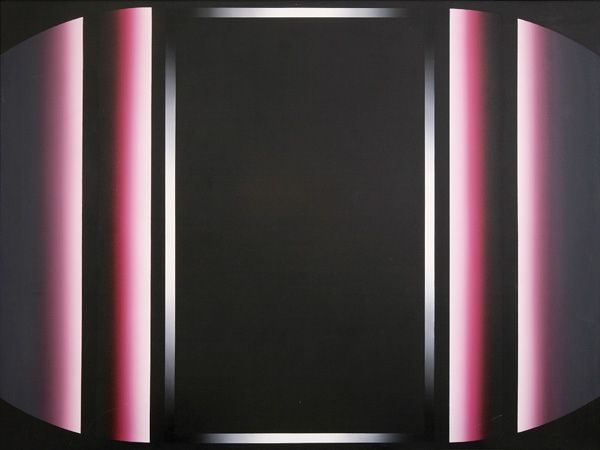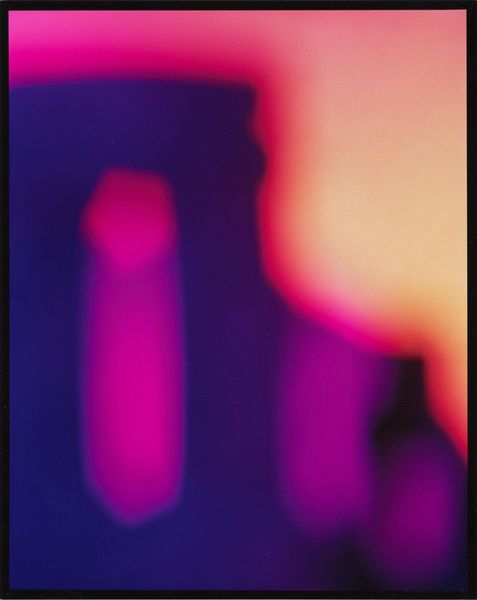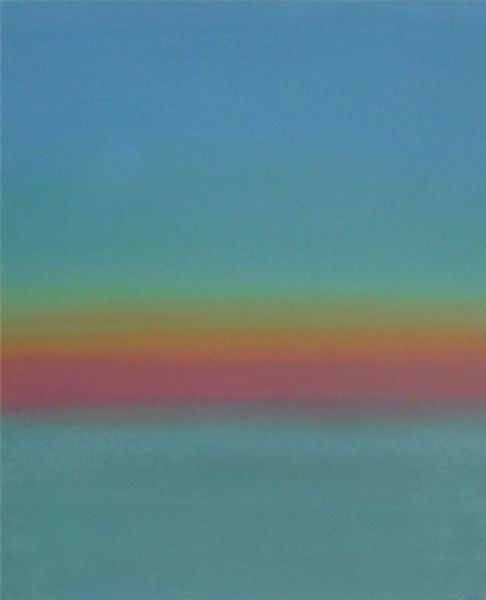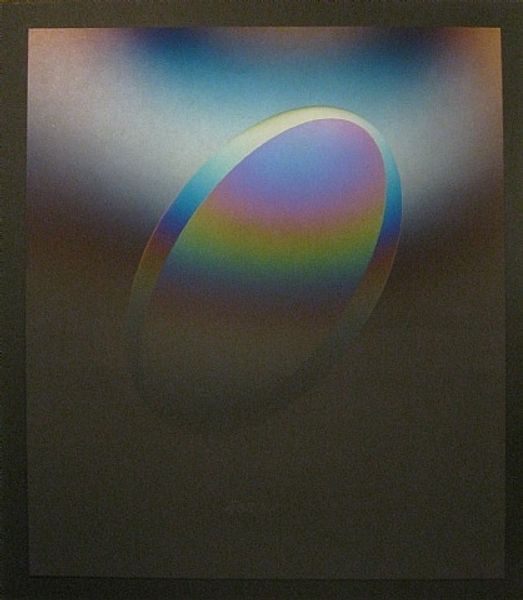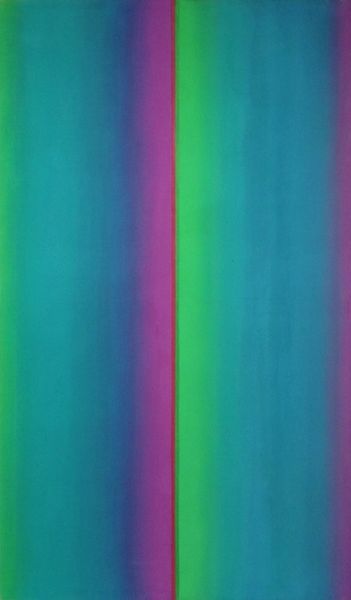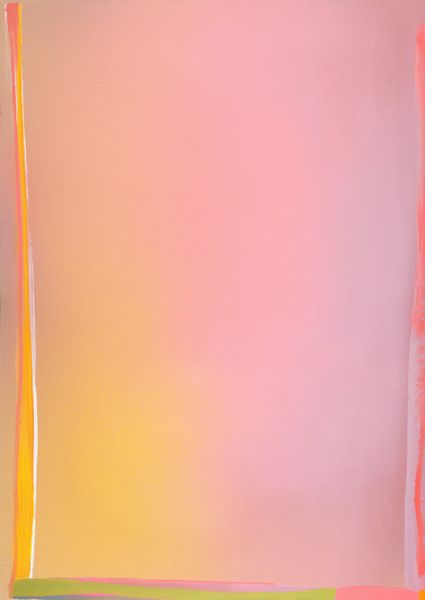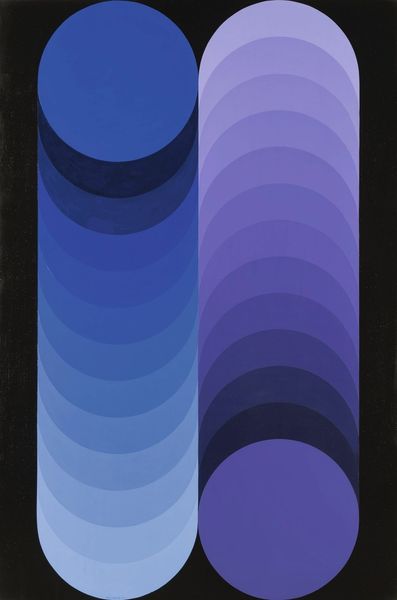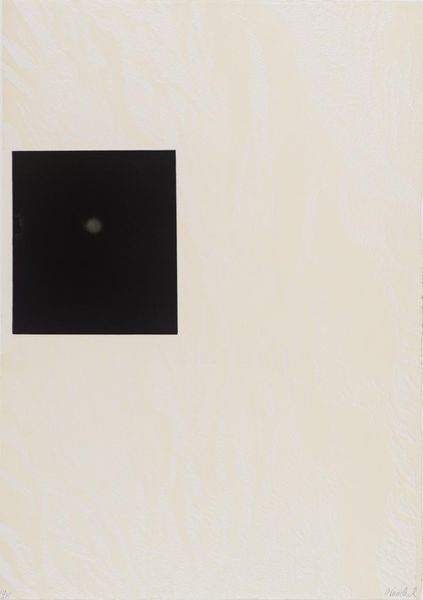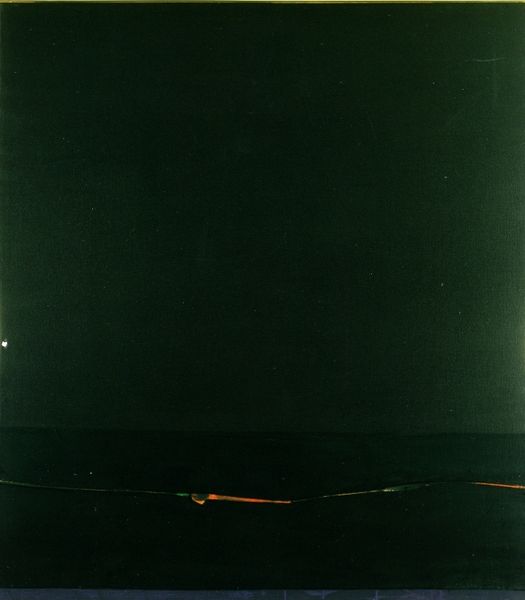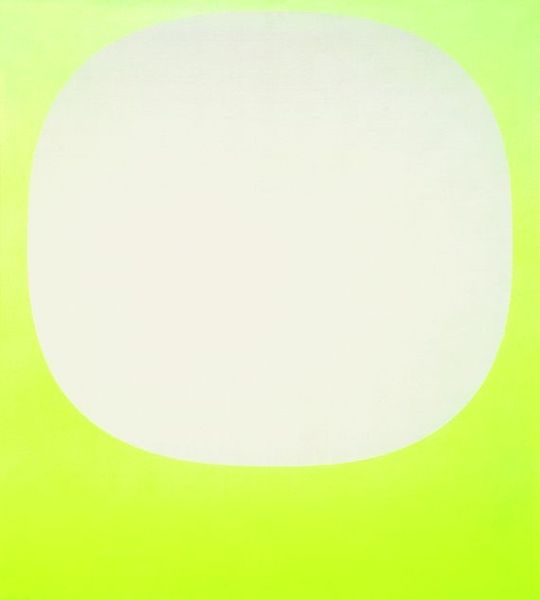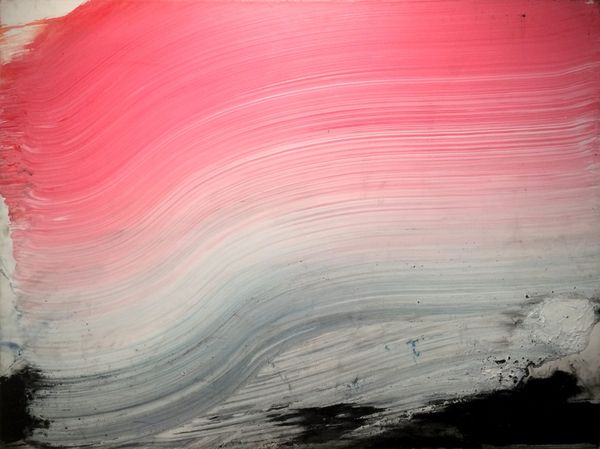
#
sky
#
low-poly
#
futuristic style
#
futuristic
#
circle
#
dark design
#
reflective
#
minimal geometric
#
3d shape
#
dark focal point
#
geometric-abstraction
#
3d digital graphic
#
abstraction
#
digital-art
#
modernism
#
space age feel
#
hard-edge-painting
Copyright: Adnan Coker,Fair Use
Curator: This striking image is titled "The Domes," created in 1993 by Adnan Coker. What strikes you first about it? Editor: The sheer drama of it. That looming sphere against a field of pure black creates such a sense of depth and mystery. It feels almost like gazing into deep space. Curator: Coker's work during this period really pushed the boundaries of geometric abstraction. He was deeply influenced by the hard-edge painting movement, which prioritized clean lines, flat surfaces, and intense color relationships. I see something almost digital in this rendering, even pre-dating common use of graphic design software. Editor: The title feels ironic, as the form defies any sort of structural logic you would normally associate with domes in our shared human reality. Instead, it’s as though we are witness to a solitary planet, self-contained in the dark cosmos. Does this work resonate differently, do you think, now in our post-internet moment compared to the initial reactions in 1993? Curator: Absolutely. Viewing it through a contemporary lens, it's hard not to see connections to digital art, maybe even low-poly renderings in early video games, particularly that gradient in the upper part of the sphere. What the political resonance to allude to some future dystopia in our digital landscape? The geometric perfection can appear sterile. Editor: Given the rise of digital art and our current anxieties surrounding AI and surveillance, viewing this now invites reflection on themes of isolation, technological advancement, and the potential for dehumanization within increasingly digital environments. It could suggest a sense of disconnect or loss of physical experience. Curator: Indeed. The historical and artistic context, together with these more contemporary theoretical framings, creates a space for multi-layered dialogues about identity and the politics of representation within art. It raises vital questions. Editor: The impact is undeniable. I leave with the unsettling feeling that I might understand it less now than when I first saw it. Curator: And perhaps that is its enduring power; its capacity to transform meaning depending on the historical currents through which we approach it.
Comments
No comments
Be the first to comment and join the conversation on the ultimate creative platform.

